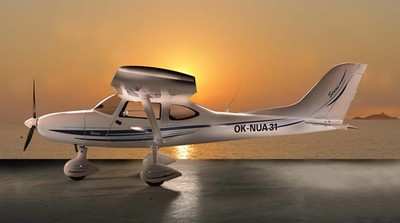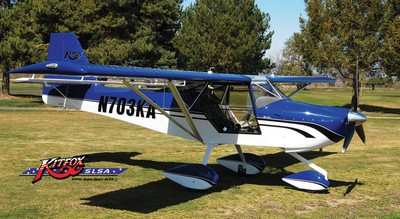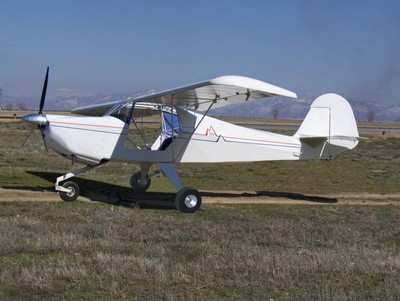Report: Some Areas Need "Minor To Significant Improvement"
 When it created created the LSA designation in 2004, the FAA
took a less hands-on approach to the category, allowing the
industry to take more direct responsibility for developing and
maintaining standards for design, manufacturing, and continued
airworthiness. The industry chose ASTM International to facilitate
the development of standards for LSA.
When it created created the LSA designation in 2004, the FAA
took a less hands-on approach to the category, allowing the
industry to take more direct responsibility for developing and
maintaining standards for design, manufacturing, and continued
airworthiness. The industry chose ASTM International to facilitate
the development of standards for LSA.
In January 2008, the FAA established the LSA Manufacturers
Assessment to evaluate the health, state of systems implementation,
and compliance of the LSA industry as a whole. Specifically, the
goal of the assessment was to gauge current LSA industry
manufacturing systems and processes through on-site evaluation,
analysis, and reporting under a continuous improvement process, and
to provide recommendations to enhance aviation safety. The first
assessment was published last month, and it gives the LSA industry
mixed reviews.
For the purposes of the assessment, The FAA worked with 30
manufacturers, extensions, and distributors. All provided
unrestricted access to their LSA facilities. During the interviews
the participants were cooperative and willing to answer questions
to the best of their ability. The LSA facilities involved
significantly contributed to the successful completion of this
assessment.

The report recommends correcting and improving several different
areas of the LSA manufacturing industry and FAA policy and
guidance. In its report, the FAA said that many of the companies
surveyed during this assessment exhibited exuberance and confidence
in their contribution to the LSA industry. The FAA says there is a
willingness and desire, regardless of experience level, to build
and promote safe LSA.
Four areas stood out: Compliance, Conformity, Oversight, and
Advisory Material. The FAA says a review of the overall results
indicates that a majority of LSA manufacturers could not fully
demonstrate their ability to comply with FAA regulatory and policy
requirements. The section summaries indicate that the
manufacturer’s ability to demonstrate compliance varied a
great deal. To address that situation, the FAA recommends that the
LSA industry should take immediate steps to fully comply with FAA
regulatory and policy requirements, and that the industry should
establish periodic meetings to work towards full compliance with
FAA regulatory and policy requirements.

The report indicates that most of the aircraft reviewed during
the assessment exhibited deficiencies in the ability to fully meet
basic requirements in certain ASTM consensus standards. The FAA
recommends that LSA manufacturers should conduct an initial
conformity inspection of all first-time-manufactured LSA models,
including standards, any regulatory required documentation and
records review, along with an SLSA conformity inspection.
Airworthiness certificates should not be issued until all issues
are resolved.
In the area of oversight, the FAA found that many assessed LSA
facilities did not fully comply with ASTM consensus standards in
the area of continuous oversight. Manufacturers, their extensions
and distributors could not show that they adhere to all consensus
standard requirements. The FAA said that the industry should
continue assessments of LSA manufacturers, extensions, and
distributors.

And finally, many LSA facilities showed weaknesses in written
procedures, knowledge, or experience related to the design,
manufacture and continued airworthiness of LSA. The FAA determined
that LSA manufacturers need advisory material describing basic
elements of manufacturing, design, quality, and continued
airworthiness systems. But it also put some of the onus on itself,
concluding that FAA should update existing policy (Advisory
Circulars and Orders) pertaining to airworthiness certification
requirements, registration marking, and designee management.
The report concludes that the majority of LSA facilities
surveyed could not fully demonstrate their ability to comply with
certain consensus standards. The assessment indicates that
manufacturers are making statements of compliance for aircraft that
may not fully meet certain consensus standards. Some manufacturers
have failed to implement widely accepted internal quality control
and production procedures that are necessary to assure minimal
compliance to the ASTM consensus standards. Many manufacturers also
lacked corrective action systems used to address systemic
deficiencies. On the distribution side, the FAA said distributors
have not developed and implemented manufacturing and quality system
procedures for many of the tasks they perform. When distributors
perform assembly, inspections, and other functions, they seldom use
the manufacturers’ procedures, records, or controls.

To continue to improve the safety of the LSA industry, the FAA
recommends that it:
- Take immediate steps to fully comply with FAA regulatory and
consensus standard requirements.
- Standardize the continuous airworthiness notification process
for all LSA types.
- Develop training to ensure industry fully understands FAA
regulatory and policy requirements, and the methods and means to
comply with those requirements.
- Establish periodic meetings between FAA and industry to work
toward full compliance to FAA regulatory and consensus standard
requirements.
- Conduct an initial conformity inspection of all
first-time-manufactured LSA models.
- Continue assessments of manufacturers, extensions, and
distributors.
- Review current accepted consensus standards for adequacy and
revise existing standards or create new standards where
necessary.
For its part, the FAA acknowledges that it should:
- Update existing policy (Advisory Circulars and Orders)
pertaining to airworthiness certification requirements,
registration marking, and designee management.
- Update Designated Airworthiness Representative(s) (DAR) and
advisor training.
- Establish a process to receive safety alerts, directives, and
other pertinent information.
- Continue oversight of the LSA manufacturers to assure
compliance with FAA requirements and ASTM consensus standards.
 ANN's Daily Aero-Linx (04.15.24)
ANN's Daily Aero-Linx (04.15.24) Classic Aero-TV: 'No Other Options' -- The Israeli Air Force's Danny Shapira
Classic Aero-TV: 'No Other Options' -- The Israeli Air Force's Danny Shapira Aero-News: Quote of the Day (04.15.24)
Aero-News: Quote of the Day (04.15.24) Airborne 04.16.24: RV Update, Affordable Flying Expo, Diamond Lil
Airborne 04.16.24: RV Update, Affordable Flying Expo, Diamond Lil ANN's Daily Aero-Term (04.16.24): Chart Supplement US
ANN's Daily Aero-Term (04.16.24): Chart Supplement US







